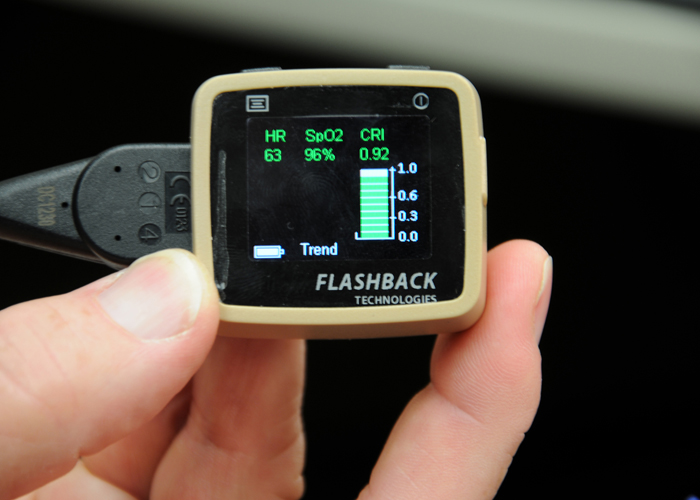Algorithm Gauges When Patients Are in Danger

Researchers at the U.S. Army Institute of Surgical Research at Joint Base San Antonio'Fort Sam Houston, Texas, are improving medical monitors that have been used in clinics and hospitals since the early 1970s to assist physicians and medical staff in assessing a patient's condition.
The Compensatory Reserve Index, or CRI, is a new algorithm that utilizes the information obtained from a standard pulse oximeter and gauges whether a patient requires resuscitation or immediate medical attention.
"This [CRI] can evaluate information from waveforms generated by taking a standard pulse oximeter, which is a non-invasive medical device routinely placed on a finger or ear and measures levels of blood oxygen saturation and heart rate," said Victor A. Convertino, Ph.D., Tactical Combat Casualty Care Research Task Area Program Manager at the USAISR. "The algorithm provides a decision support system that could help a young medic who doesn't have much experience in pre-hospital care make life-saving decisions."
The standard measurements displayed by a pulse oximeter cannot detect whether a patient is in danger of crashing [going into shock] like the CRI. The CRI has a gauge much like a fuel gauge in a motor vehicle to indicate when fuel is running low. The CRI gauge begins to show a loss in "fuel" well in advance of changes in blood oxygen or heart rate measured by the pulse oximeter.
According to Convertino, when a person is injured and bleeding internally, the body compensates by increasing heart rate and constricting blood vessels responses that elevate blood pressure. This compensation creates a patient with vital signs and cognition that appear normal to the attending clinician. The CRI will show that the patient is in danger whereas the pulse oximeter alone does not.
"A person can be bleeding out internally and seem normal until the body can no longer compensate and 'crash' [go into shock] in a matter of seconds," said Convertino.
Convertino and his team have conducted experiments on more than 230 participants using a lower negative blood pressure machine as a model of hemorrhage to collect the data that has been downloaded onto the algorithm.
"The physiology of using the LNBP machine looks the same as if someone were bleeding out," he said. "It's a way of 'bleeding' someone without taking a drop of blood."
The CRI now requires U.S. Food and Drug Administration approval.
"We have developed a protocol to conduct clinical trials," said Convertino. "We're pretty confident that the CRI will receive FDA clearance within the next year."
The CRI was developed in part under an award by the Small Business Technology Transfer program, and is currently under-going further research and development under an award from the Small Business Innovation Research (SBIR) program. The SBIR program is designed to stimulate technological innovation, increase small business participation in federally funded R&D, foster participation by minority and disadvantaged firms in technological innovation, and increase private sector commercialization of federal R&D. To learn more, visit
www.acq.osd.mil/osbp/sbir and
www.dodsbir.net
and
www.dodsbir.net














